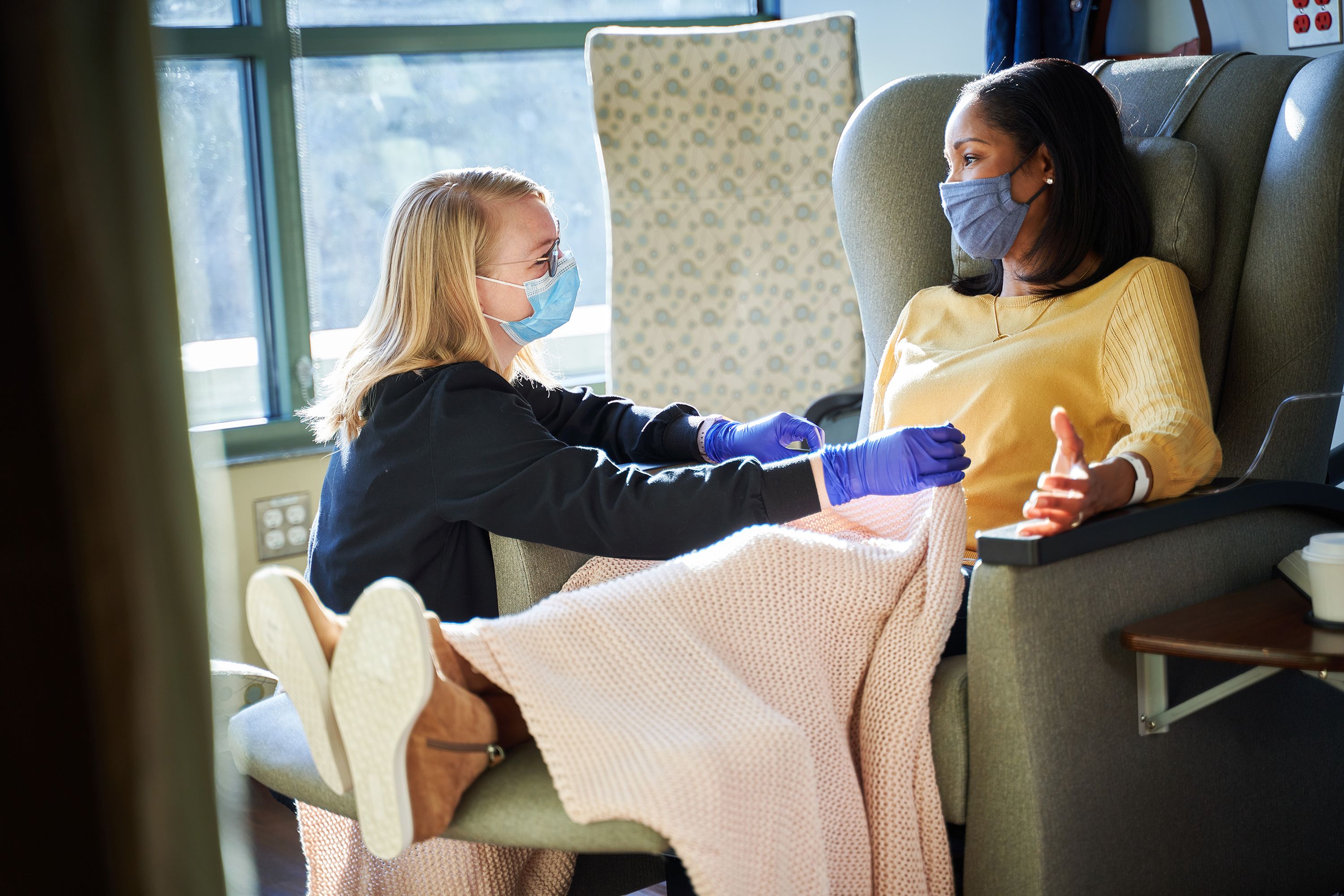Patient-Centric Infusions Promote Patient Autonomy and Strengthen Nurse-Patient Relationships
Arletta Jackson, RN, MSN, explains the concept of patient-centric infusion and how it benefits both nurses and patients.
Arletta Jackson, RN, MSN

Anticancer infusions can be an anxiety-filled experience for patients, according to Arletta Jackson, RN, MSN. However, institutions can take steps to improve this experience for patients.
Jackson, who is the director of infusion and wound care at City of Hope Atlanta, recently spoke with Oncology Nursing News® about patient-centric infusions. As she explained, patients receiving chemotherapy or immunotherapy infusions benefit from having privacy during their infusion, being able to go outside, continue working during treatment, and being able to see multiple providers on a single visit.
According to Jackson, adopting a patient-centric focus has allowed the nursing staff at her institution to develop richer relationships with their patients.
Oncology Nursing News: Can you explain what patient-centered infusion means and how it would differ from a more conventional infusion experience for the patient?
Jackson: The patient-centric experience places the patient at the forefront. We [create] a streamlined process for patients coming in to receive chemotherapy. When patients come in, they are checked in, like at other organizations, but then they go to our port room [where] they have their labs drawn and their ports are accessed. From there, they go to see their medical oncologist who reviews the labs and determines [whether] the patient can safely receive chemotherapy.
Patients are on [the nurse’s] schedule for their treatment; they come up, and they are checked in. [We work with a] chemo-processor, which is an individual who looks at all the lab work, and the consents, to make sure the patient is ready to have treatment. Then the patient is escorted back by one of our patient care technicians to a bay.
Each patient is in a private bay, and they have their own television [to watch or they can] do work. It allows them to continue their activities of daily living without having delays and deadlines. Life does not stop because the patient has cancer. We are trying to make sure that we support the process of them having the ability to continue life.
Has your institution always had this system?
We have [and] have been in existence for 11 years. The focus was on the patients coming in for treatment in our infusion department.
We have a patio outside, so patients do not have to stay inside for their treatments. If it is not their first treatment, and they have a caregiver with them—or someone who can alert us if they have a reaction—then they are able to go outside and sit on the patio while they are receiving their treatment.
We have always implemented this process so our patients [could] have their various appointments under 1 roof. They can see the medical oncologist, have their infusion, their x-ray procedures, ultrasounds, and radiology procedures [during the same visit]. They can also see a nutritionist, they can visit behavioral health services, or meet with the chaplain [during that visit].
We offer all our services here so the patient can make 1 trip [and] have all their appointments in 1 day. This gives them more time back to their daily life.
Are there any logistic challenges in helping organize patients through many different providers on a single visit?
The only setback we have run into is that most of our patients like to come in before 5:00 pm, [even though] we are open until 9:00 pm. We [care for] as many patients as we can safely during the allotted timeframe to ensure that we have nurses that can care for them in a safe manner.
Infusion at City of Hope Atlanta

What are the nursing implications to this approach to infusion?
The nurses like it because they do not feel hurried and rushed with their patients. They receive a patient every 30 minutes, which gives them the opportunity to really network with their patient, to assess their patient, to see how well they tolerate the treatment on their prior visit and to see if there’s anything that needs follow-up with the provider before we proceed. [It] allows them to just interact with the patients.
We see our patients about every 3 weeks, so they get used to the team, and the team gets used to them. They are able to develop that rapport and relationship. Several of our patients will come in and ask for a particular nurse because they have developed that relationship. If that nurse is scheduled and working that day, then we do everything within our power to assign that patient to the nurse.
[Having] worked in other institutions and organizations, I see a great difference with the patient-centric focus. Even when we are down in the corridors or we are walking the halls, they see us, they acknowledge us, and they thank us for what we have done.
Shared Model of Care Post-HCT Offers Safe Follow-Up, Reduces Patient Burden
Published: March 19th 2025 | Updated: March 19th 2025Alternating post-HCT care between specialized facilities and local cancer centers produced noninferior non-relapse mortality and similar quality of life to usual care.


